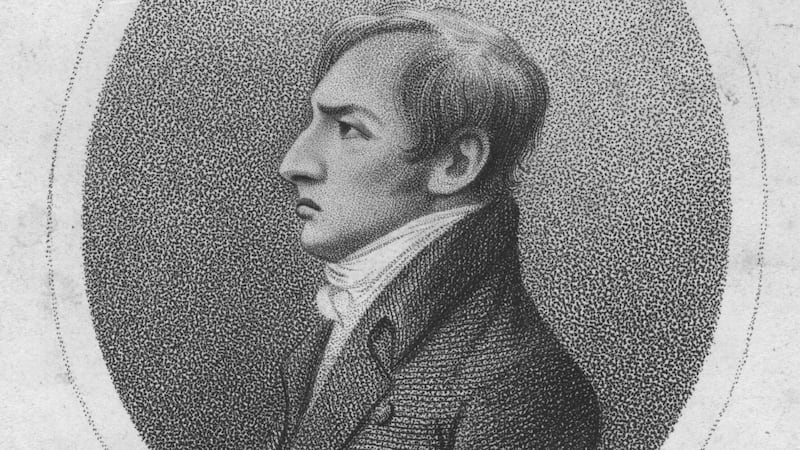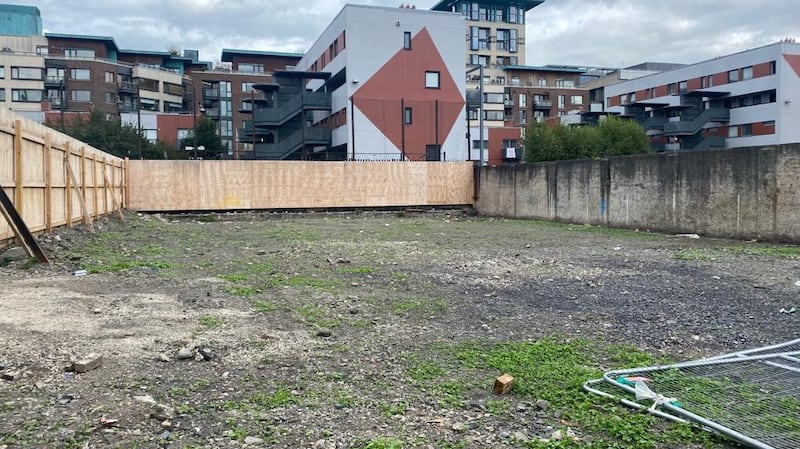Skeletal remains have been found at one of the locations identified as a possible last resting place of Robert Emmet who was executed on this day in 1803.
The remains were found during an excavation at the back of St Paul’s Church in Stoneybatter in Dublin.
The disappearance of the body of Robert Emmet is one of the great mysteries of Irish history.
Emmet was tried and then hanged for instigating the ill-fated 1803 rebellion. He became a symbol of Irish martyrdom for his speech from the dock in which he concluded: “Let them and me rest in obscurity and peace, and my name remain uninscribed, until other times and other men can do justice to my character. When my country takes her place among the nations of the earth, then, and not till then, let my epitaph be written.”
After he was publicly hanged outside St Catherine’s Church in Thomas Street on September 20th, 1803, his head was displayed to the crowd by the hangman Thomas Galvin. The remains of Emmet’s body was taken to Bully’s Acre in the grounds of what is now the Royal Hospital Kilmainham and buried there.
When some of his friends went to reintern his remains from Bully’s Acre to St Michan’s Church in Church Street, a church associated with the United Irishmen, they found there was no body there, and so began a search which endures to this day.

His great-nephew Dr Thomas Addis Emmet requested an archaeological dig at the family vault in St Peter’s Church in Aungier Street to mark the centenary of Emmet’s death in 1903, but that proved to be unsuccessful.
Speculation
St Paul’s Church is another contender in the saga of Emmet’s remains. It was the parish church of Kilmainham Gaol’s doctor and effective governor Dr Edward Trevor.
In his book In the Footsteps of Robert Emmet, JJ Reynolds speculated that Trevor removed Emmet’s body and put it in an unmarked grave in the grounds of St Paul’s Church. This was to ensure that his grave would not become a shrine for Irish nationalism.
The church, which was the venue for the consecration of the philosopher George Berkeley as Bishop of Cloyne in 1734, has been converted into the Spade Enterprise Centre, a not-for-profit social enterprise unit.
The land where the skeletal remains were found is being turned into a shared kitchen for small business enterprises in the area.

Archaeologist Franc Miles said burials in the grounds were from 1702 to the 1860s. A extant set of burial records remain, but Emmet, if he really is buried there, would have no record.
Previous exhumations were carried out when the graveyard was closed in 1860s to make way for a school on the site.
“With all the evacuations, we were left with bits and pieces of body. There weren’t many full skeletons,” he said.
Mr Miles said it all the gravemarkers and stones were removed in the 1860s “so all you are left with really are bones.”
Mr Miles said it would be difficult if not impossible to identify Emmet’s remains even if they are buried in the grounds of St Paul’s Church.
His own “educated guess” is that Emmet’s body is still buried somewhere in Bully’s Acre.
As many of his supporters have said over the last two centuries: “Do not look for him. His grave is Ireland.”










